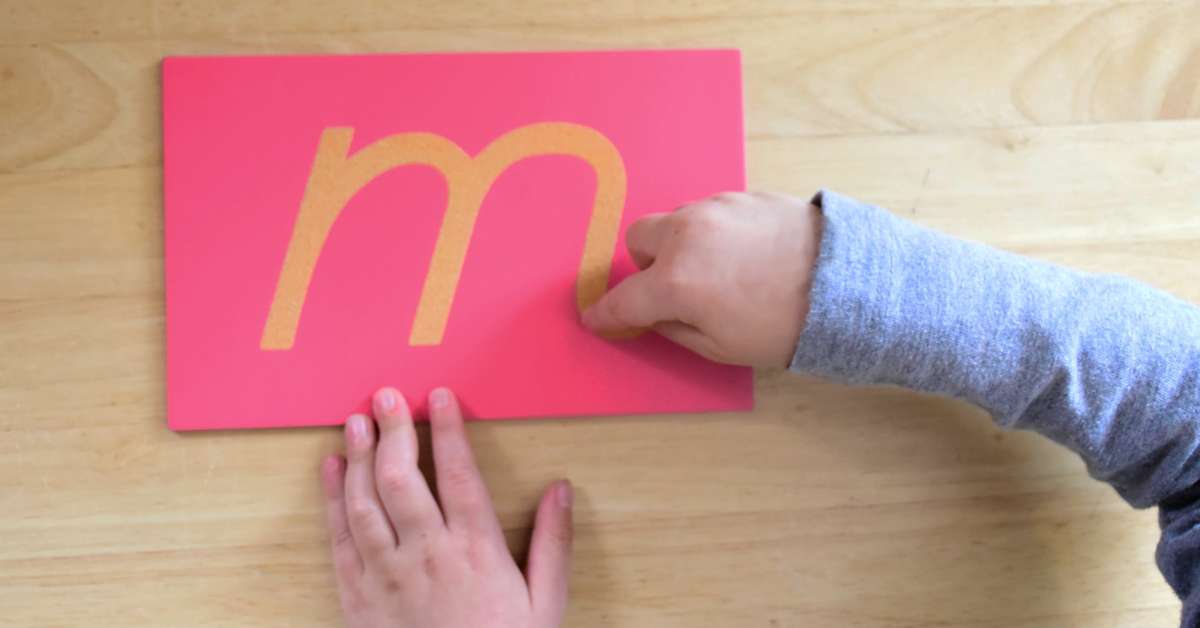
Helping children fall in love with learning starts with small, hands-on tools that spark their curiosity. One of the most beloved materials in Montessori education is sandpaper letters—a simple yet powerful way to introduce young learners to the alphabet.
At Dannico Woodworks, we believe in supporting child development through thoughtfully designed tools and furniture.
Just like our furniture encourages independence and creativity, sandpaper letters give children a sensory-rich, tactile pathway to literacy.
If you’re curious about how to use sandpaper letters Montessori style at home or in a classroom, this guide will walk you through everything you need to know.
What Are Sandpaper Letters?
Sandpaper letters are wooden or cardboard tiles with letters cut from textured sandpaper attached to the surface.
Children use their fingers to trace each letter while saying its sound. This multi-sensory approach helps them connect the visual shape, tactile experience, and phonetic sound of each letter—laying a strong foundation for reading and writing.
In Montessori philosophy, learning begins with the senses. By touching, seeing, and hearing the letter all at once, children build deep, lasting memory associations that go beyond rote memorization.
Why Sandpaper Letters Matter
Before children can hold a pencil and write fluently, they need to develop fine motor control and phonetic awareness. Sandpaper letters support both skills by:
- Introducing phonics naturally – Children associate each letter with its sound rather than just its name.
- Strengthening motor memory – Tracing the textured surface helps children remember letter shapes.
- Building confidence – The hands-on process feels like play, making learning less intimidating.
- Encouraging independence – Children can explore the letters on their own, repeating as often as they like.
This is why Montessori educators typically introduce sandpaper letters between ages 3 and 6, when children are eager to explore symbols and sounds.
How To Use Sandpaper Letters the Montessori Way
Here’s a step-by-step guide you can use at home or in a classroom:
1. Prepare the Environment
Montessori emphasizes calm, uncluttered spaces. Choose a quiet, distraction-free spot. Place the sandpaper letters neatly in a box or tray so your child can easily see and choose them.
2. Start With Sounds, Not Alphabet Order
Instead of teaching “A, B, C” in sequence, begin with a small group of letters that are phonetically distinct and easy to pronounce, such as m, a, t. This allows your child to start blending sounds into words early on (like “mat” or “am”).
3. Demonstrate the Three-Period Lesson
Montessori often uses a teaching method called the three-period lesson to introduce new concepts:
- Naming (Introduction) – Pick up a letter, trace it slowly with your index and middle finger, and say its sound aloud. For example, trace “m” while saying “mmm.” Invite your child to do the same.
- Recognition (Association) – Place a few letters in front of your child. Ask questions like, “Can you find the letter that makes the ‘a’ sound?” or “Point to ‘m.’”
- Recall (Remembering) – Hold up one letter and ask, “What sound does this make?” If your child struggles, return gently to step one without pressure.
4. Encourage Tracing With Both Hands
Children may prefer one hand at first, but encourage them to trace letters with both the right and left hands. This supports coordination and strengthens memory.
5. Keep Sessions Short and Joyful
Young children learn best in short bursts. Spend just 5–10 minutes at a time and stop before your child loses interest. Always end on a positive note so they’re excited to return next time.
Common Mistakes To Avoid
- Teaching letter names first – Focus on sounds (“sss” for S) instead of names (“ess”). This makes reading easier later.
- Rushing through the set – Stick to just a few letters at a time. Mastery matters more than speed.
- Correcting too harshly – If your child struggles, guide gently. The goal is exploration, not perfection.
- Skipping sensory input – Don’t just show the letter. Always include tracing and sound for the full multi-sensory benefit.
How Sandpaper Letters Fit Into the Bigger Picture
Sandpaper letters aren’t meant to stand alone—they are part of the Montessori language journey. After children grow comfortable with letters and their sounds, they move on to:
- Movable alphabets – For building words before writing them.
- Writing practice – Using chalkboards or trays filled with sand to “write” letters by hand.
- Early reading activities – Blending the familiar sounds into short words and phrases.
When paired with Montessori-inspired furniture and learning spaces, children gain a supportive environment that nurtures independence, focus, and joy in learning.
At Dannico Woodworks, we design furniture that complements this approach—tables at child height, shelves that encourage self-selection, and spaces that promote order and calm. Together, these tools create an environment where learning feels natural.
FAQs
What age should I introduce sandpaper letters?
Most children are ready around ages 3 to 4, though some may show interest earlier. Look for signs like curiosity about letters, mimicking sounds, or asking about words.
Should I buy uppercase or lowercase letters first?
Start with lowercase, since they are more common in reading and writing. Uppercase letters can be introduced later.
Do I need to follow Montessori strictly?
Not at all. You can adapt the approach to your child’s pace and interests. The key is making learning joyful and hands-on.
Can I make sandpaper letters at home?
Yes. Many parents craft their own using sandpaper, cardstock, and glue. Just make sure the size and texture are consistent and comfortable for little fingers.
How long should I use sandpaper letters before moving on?
Every child is different. Some may be ready to progress within a few months, while others may enjoy revisiting sandpaper letters for longer. Let your child’s interest guide you.
Final Thoughts
Sandpaper letters are more than a learning tool—they’re a doorway to language, confidence, and independence.
By using them Montessori style, you’re giving your child the gift of a gentle, hands-on introduction to literacy that can shape their relationship with learning for years to come.
At Dannico Woodworks, we understand how important it is to create spaces where children thrive.
That’s why we design durable, child-centered furniture that supports independence and exploration—perfect for pairing with Montessori tools like sandpaper letters.
Are you ready to set up a learning space that inspires your child every day?
Related Articles:
– Unique Sci-Fi Gifts for Kids
– Preparing Your Child for College: A Step-by-Step Guide
– The Importance of Global Initiatives in Spreading Awareness About Childhood Malnutrition
– Igniting the Spark of Lifelong Learning in Your Child
– Redefining Success: How Autistic Individuals Can Reach Their Full Potential

